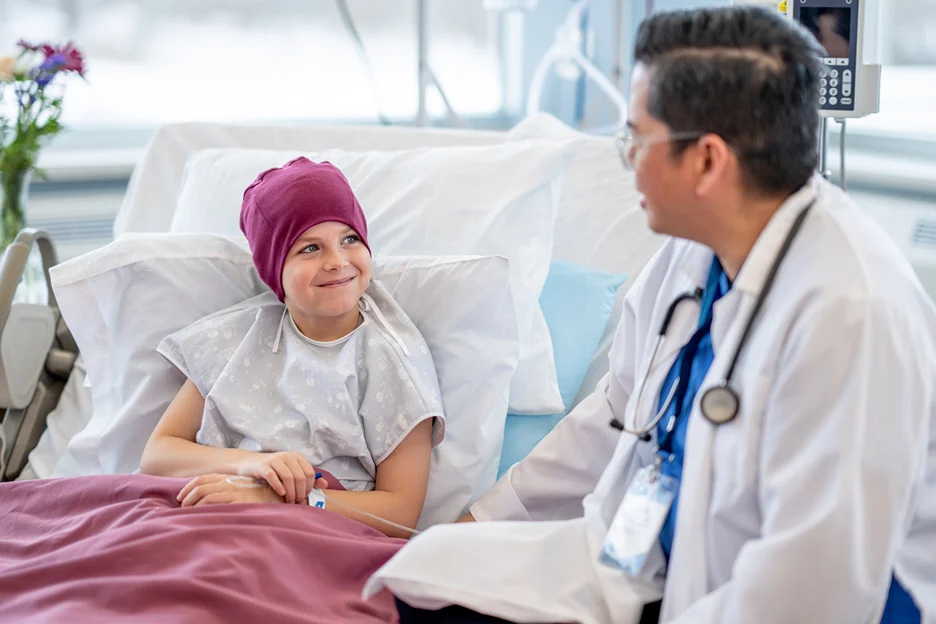Definition and overview of innate immunity
Innate immunity, also known as the first line of defense, is a crucial component of the immune system. It is an evolutionarily ancient system that exists in all multicellular organisms, providing a rapid and non-specific response to pathogens, foreign substances, or damaged self-components.
Innate immunity consists of physical, chemical, and cellular mechanisms that work together to protect the body from infections and diseases. These mechanisms do not require prior exposure to the pathogen or antigen, unlike adaptive immunity, which is a more specific and tailored response developed over time.
The innate immune system is designed to recognize various pathogen-associated molecular patterns (PAMPs) and damage-associated molecular patterns (DAMPs) through a set of germ-line encoded pattern recognition receptors (PRRs). This recognition initiates a cascade of signaling events that lead to the activation of immune cells and the production of effector molecules, such as cytokines and chemokines, which help to eliminate or control the invading pathogens.
Importance of innate immunity in protecting the genitourinary tract
The genitourinary tract, which includes the reproductive and urinary systems, is intricately involved in various essential functions, including reproduction, waste elimination, and maintaining the body’s water and electrolyte balance. This system is constantly exposed to a diverse range of pathogens, including bacteria, viruses, fungi, and parasites. The innate immune system plays a vital role in protecting the genitourinary tract from these harmful invaders.
The genitourinary tract is lined by epithelial cells, which serve as a protective barrier and are the first line of defense against infection. These cells produce antimicrobial peptides, mucins, and other factors that help prevent the adhesion and invasion of pathogens.
The genitourinary tract is equipped with mechanical defenses, such as urine flow and mucus, which physically remove pathogens from the tract. The normal microbial flora of the genitourinary tract also contributes to protection by competing with pathogens for resources and producing substances that inhibit their growth.
Components and mechanisms involved in innate immune response

The innate immune response relies on a complex interplay of cellular components and signaling mechanisms to provide rapid defense against invading pathogens and tumor cells. In this section, we will delve into the intricate processes that enable the innate immune system to recognize and eliminate harmful cells before adaptive immunity is activated.
Physical barriers
The body’s first line of defense against pathogens involves physical barriers that prevent entry or attachment. The skin and mucous membranes, including those in the genitourinary tract, act as physical barriers to protect the body from external threats. Additionally, mechanical defenses, such as mucus and urine flow, help to eliminate pathogens from the genitourinary tract.
Chemical barriers
Chemical barriers, such as antimicrobial peptides, enzymes, and other chemicals, are produced by cells lining the genitourinary tract. These substances help to neutralize pathogens and prevent infection. For example, lysozyme, lactoferrin, and defensins are antimicrobial molecules found in various body fluids that can directly attack pathogens or inhibit their growth and reproduction.
Cellular components
The innate immune system is comprised of various types of immune cells, including neutrophils, macrophages, dendritic cells, natural killer (NK) cells, and others. These cells play a critical role in the detection, elimination, and containment of infections. Neutrophils and macrophages, for instance, are phagocytic cells that engulf and destroy pathogens. NK cells, on the other hand, can directly kill infected cells without prior activation.
Pattern recognition receptors (PRRs)
PRRs, such as Toll-like receptors (TLRs) and NOD-like receptors (NLRs), are expressed by various immune cells and play a crucial role in recognizing PAMPs and DAMPs. Upon recognition, these receptors initiate signaling pathways that lead to the activation of immune cells, production of cytokines and chemokines, and the initiation of an inflammatory response.
Inflammation
Inflammation is a critical component of the innate immune response, promoting the recruitment of immune cells to the site of infection, increasing vascular permeability to facilitate immune cell migration, and inducing the production of effector molecules to counteract the infection. Inflammation can be triggered by various factors, including PRR activation, tissue damage, or the presence of pathogens.
Key Players in the Innate Immune System
The innate immune system is composed of a diverse array of specialized cells and molecules that work in concert to mount an immediate defense against foreign invaders and aberrant cells. In this section, we will examine the key players involved in this crucial first line of defense, including macrophages, neutrophils, dendritic cells, and natural killer cells, as well as their unique roles and interactions within the innate immune response.
Macrophages, neutrophils, and dendritic cells
This section explores the specific functions of these critical immune cells and discusses how their collaborative actions contribute to a robust and efficient innate immune response.
Functions of each cell type in eliminating cancer cells and virus-infected body cells
Macrophages, neutrophils, and dendritic cells are essential components of the innate immune system, playing distinct roles in eliminating cancer cells and virus-infected body cells.
Macrophages are versatile phagocytic cells that engulf and destroy foreign particles, pathogens, and cellular debris. They also contribute to the elimination of cancer cells and virus-infected cells by releasing cytotoxic molecules, such as reactive oxygen species (ROS) and nitric oxide (NO). Macrophages can also present antigens to T cells, thereby facilitating adaptive immune responses.
Neutrophils are the most abundant type of white blood cells and serve as the primary responders to infections. They are highly efficient phagocytes and can release cytotoxic granules containing enzymes and antimicrobial peptides to eliminate cancer cells and virus-infected cells. Neutrophils can also form extracellular traps (NETs) to immobilize and kill pathogens or cancer cells.
Dendritic cells are specialized antigen-presenting cells that play a crucial role in bridging the innate and adaptive immune systems. They can directly engulf and eliminate cancer cells and virus-infected cells through phagocytosis. Additionally, dendritic cells process and present tumor or viral antigens to T cells, thereby initiating an adaptive immune response.
Interactions between these cells for effective immune responses
The interactions between macrophages, neutrophils, and dendritic cells are essential for mounting effective immune responses to cancer cells and virus-infected cells. These cells communicate through the secretion of various cytokines and chemokines, which promote the recruitment, activation, and coordination of immune cells.
Macrophages, for instance, can release chemokines that attract neutrophils to the site of infection or tumor growth. Neutrophils, in turn, can secrete cytokines that activate macrophages and dendritic cells, promoting their ability to engulf and process pathogens or cancer cells more effectively. Dendritic cells present antigens to T cells, activating the adaptive immune response and amplifying the overall immune reaction against cancer cells and virus-infected cells.
Natural killer (NK) cells
Natural killer (NK) cells are essential components of the innate immune system, playing a crucial role in the early detection and elimination of cancerous or infected cells. They can recognize and kill target cells without prior activation or antigen presentation, allowing them to respond rapidly to emerging threats before the adaptive immune system is activated.
NK cells are particularly effective at eliminating cells with reduced or altered expression of major histocompatibility complex (MHC) class I molecules, which is a common feature of cancer cells and virus-infected cells. The absence or alteration of MHC class I molecules on target cells signals to NK cells that these cells are abnormal or damaged, prompting NK cells to initiate cytotoxic activity.
Mechanisms through which NK cells recognize target cells
NK cells recognize target cells through a complex interplay of activating and inhibitory receptors on their surface. These receptors interact with ligands on the surface of target cells, allowing NK cells to distinguish between healthy and abnormal cells.
Activating receptors, such as natural cytotoxicity receptors (NCRs) and NKG2D, recognize stress-induced ligands on the surface of cancer cells or virus-infected cells. The interaction between activating receptors and their ligands triggers NK cell activation and the release of cytotoxic granules, which contain perforin and granzymes, leading to target cell lysis.
Inhibitory receptors, such as killer cell immunoglobulin-like receptors (KIRs) and NKG2A, recognize MHC class I molecules on healthy cells. The binding of inhibitory receptors to MHC class I molecules sends inhibitory signals to NK cells, preventing them from attacking normal cells. In the absence or alteration of MHC class I molecules on target cells, the inhibitory signals are diminished, and NK cells become activated to eliminate the abnormal cells.
Overview of an innate immunity flowchart
An innate immunity flowchart is a visual representation of the sequence of events and interactions that occur during the activation of the innate immune response. It typically begins with the recognition of a pathogen, damaged tissue, or cancerous cell and goes on to illustrate the various cellular and molecular processes inv
- Recognition of pathogen-associated molecular patterns (PAMPs) or damage-associated molecular patterns (DAMPs) by pattern recognition receptors (PRRs) on immune cells or tissue-resident cells.
- Activation and recruitment of immune cells, such as macrophages, neutrophils, dendritic cells, and NK cells, to the site of infection or tissue damage.
- Release of cytokines and chemokines to facilitate communication between immune cells and amplify the immune response.
- Phagocytosis, cytotoxic granule release, and NET formation by immune cells to eliminate pathogens, damaged cells, or cancer cells.
- Initiation of an adaptive immune response, if necessary, through antigen presentation by dendritic cells to T cells.
Examination of an innate immune response graph during infection or tumor detection
An innate immune response graph can help to visualize the dynamic changes in the immune system during infection or tumor detection. This type of graph typically plots various immune parameters, such as the number of immune cells or the concentration of specific cytokines, over time.
By examining an innate immune response graph, it is possible to gain insights into the temporal patterns and the intensity of the immune response. Key aspects of an innate immune response graph may include:
- An initial rise in the number of immune cells at the site of infection or tissue damage, reflecting the recruitment of macrophages, neutrophils, dendritic cells, and NK cells.
- A spike in the concentration of pro-inflammatory cytokines and chemokines, such as interleukin-1 (IL-1), IL-6, and tumor necrosis factor-alpha (TNF-α), indicating the activation of immune cells and the amplification of the immune response.
- A decline in the number of pathogens or cancer cells, reflecting the effectiveness of the innate immune response in eliminating the threat.
- A potential increase in the number of T cells and B cells, indicating the initiation of an adaptive immune response if the innate immune response is insufficient to clear the infection or tumor completely.
The Critical Role of Innate Immunity
In summary, the innate immune system plays a pivotal role in providing a rapid and efficient defense against cancerous and virus-infected body cells before the activation of adaptive immunity. As we have explored throughout this article, the intricate interplay between key cellular components—including macrophages, neutrophils, dendritic cells, and natural killer cells—enables our bodies to mount an effective response to these threats.
Understanding the complex mechanisms involved in innate immunity has significant implications for future research in immunology. By further elucidating the interactions between various components within the immune system, we can potentially unlock new therapeutic strategies that harness our natural defenses against cancer and viral infections. This knowledge may also pave the way for improved treatments for patients with compromised adaptive immune systems or help identify targets for novel immunotherapies. Ultimately, continued exploration of the critical role of innate immunity is essential to advancing our understanding of human health and disease management.
